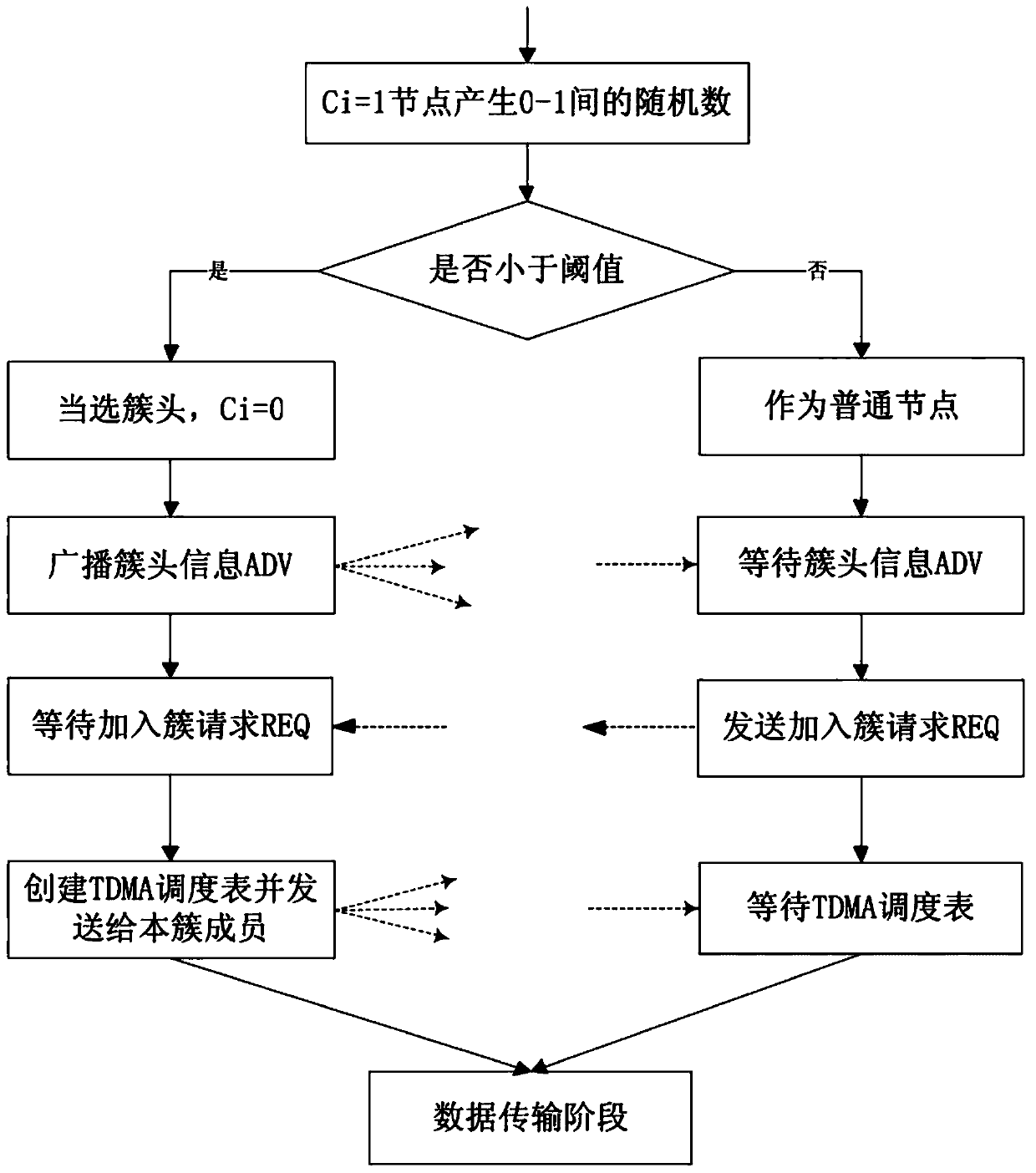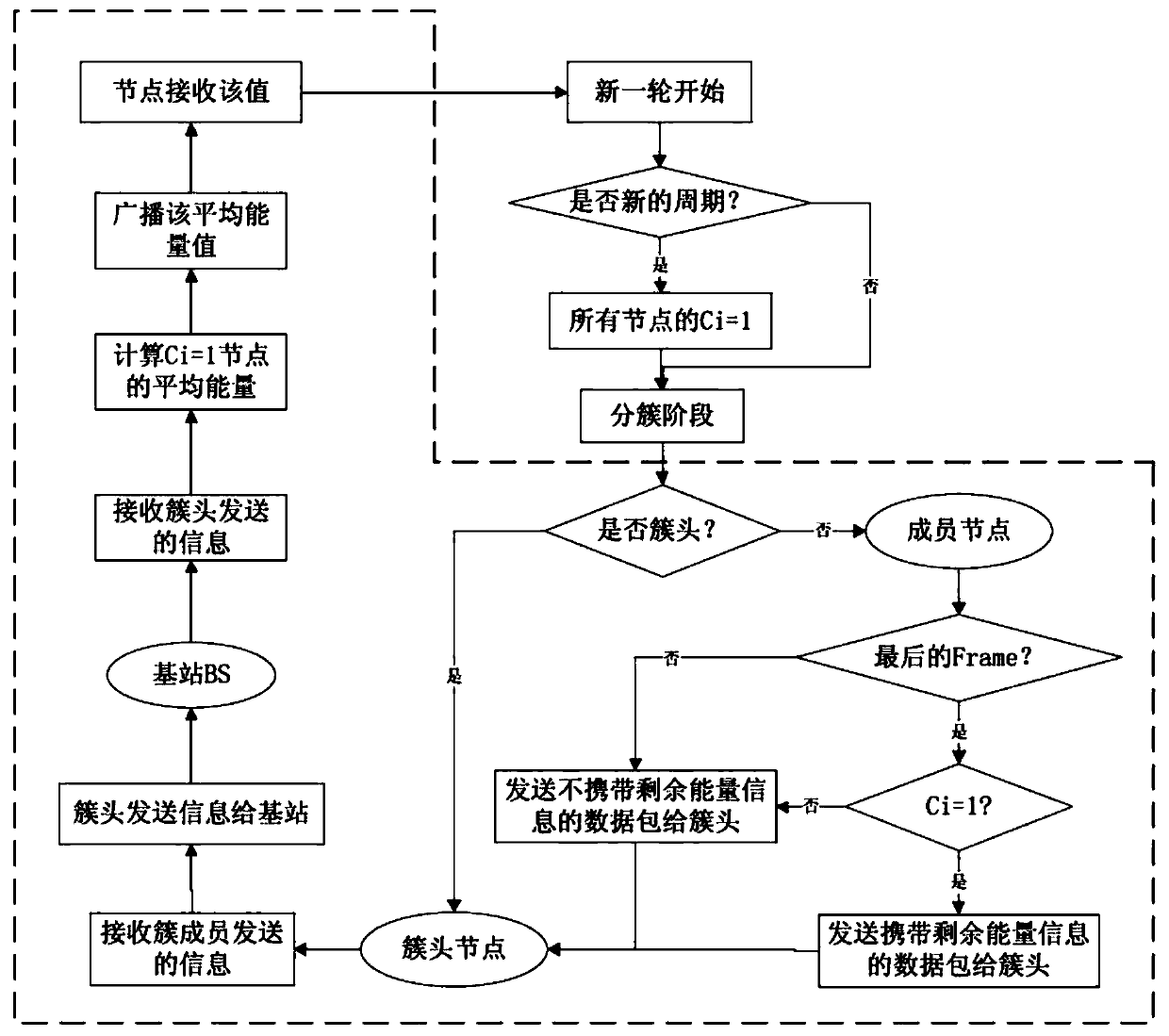An Energy Balanced Routing Optimization Method for Wireless Sensor Networks Based on Cluster Head Expectations
A wireless sensor and energy balancing technology, applied in network traffic/resource management, network topology, wireless communication, etc., can solve problems such as unbalanced energy consumption of cluster heads, achieve extended network life cycle, cluster head distribution and quantity stability, The effect of improving energy efficiency
- Summary
- Abstract
- Description
- Claims
- Application Information
AI Technical Summary
Problems solved by technology
Method used
Image
Examples
Embodiment 1
[0051] see figure 1 and figure 2 As shown, an energy-balanced routing optimization method for wireless sensor networks based on cluster head expectations of the present invention is characterized in that it includes: adding factors such as the number of clusters, the remaining energy of nodes, and the load balance of clusters to the election of cluster heads, The load distribution of the clusters and the remaining energy of the nodes are used as the two main indicators for the election of the cluster head; the working time unit of the election of the cluster head is a round, and each round is divided into two parts: the cluster establishment phase and the data transmission phase, through Adjust the threshold to ensure that the number of cluster heads in each round is within the expected range, and solve the problem of unbalanced energy consumption of cluster heads; by controlling the coverage of cluster heads at different positions, and calculating distance weights and remain...
Embodiment 2
[0069] The LEACH algorithm adopts the method of rotating cluster heads, and the unit of working time is a round, and each round is divided into two parts: the cluster establishment phase and the data transmission phase. In the cluster establishment phase, node i randomly generates a positive number less than 1, if it is less than the threshold P i , then node i is elected as the cluster head of this round. Threshold P i for:
[0070]
[0071] Where n is the total number of nodes, the expected number of cluster heads is k (k is a user-defined parameter, such as k=5%*n), r is the number of current rounds, and n / k rounds are defined as a cycle. C i is an indicator function of whether node i has become a cluster head in the current period, that is, if node i has not become a cluster head in the current period, then C i = 1, otherwise C i =0. For the convenience of calculation and proof, formula (1) is rewritten as formula (2):
[0072]
[0073] There are many improved...
Embodiment 3
[0096] The pseudo code of the proposed CHEEB algorithm of the present invention is as follows:
[0097]
[0098]
[0099]
PUM
 Login to View More
Login to View More Abstract
Description
Claims
Application Information
 Login to View More
Login to View More - R&D
- Intellectual Property
- Life Sciences
- Materials
- Tech Scout
- Unparalleled Data Quality
- Higher Quality Content
- 60% Fewer Hallucinations
Browse by: Latest US Patents, China's latest patents, Technical Efficacy Thesaurus, Application Domain, Technology Topic, Popular Technical Reports.
© 2025 PatSnap. All rights reserved.Legal|Privacy policy|Modern Slavery Act Transparency Statement|Sitemap|About US| Contact US: help@patsnap.com



